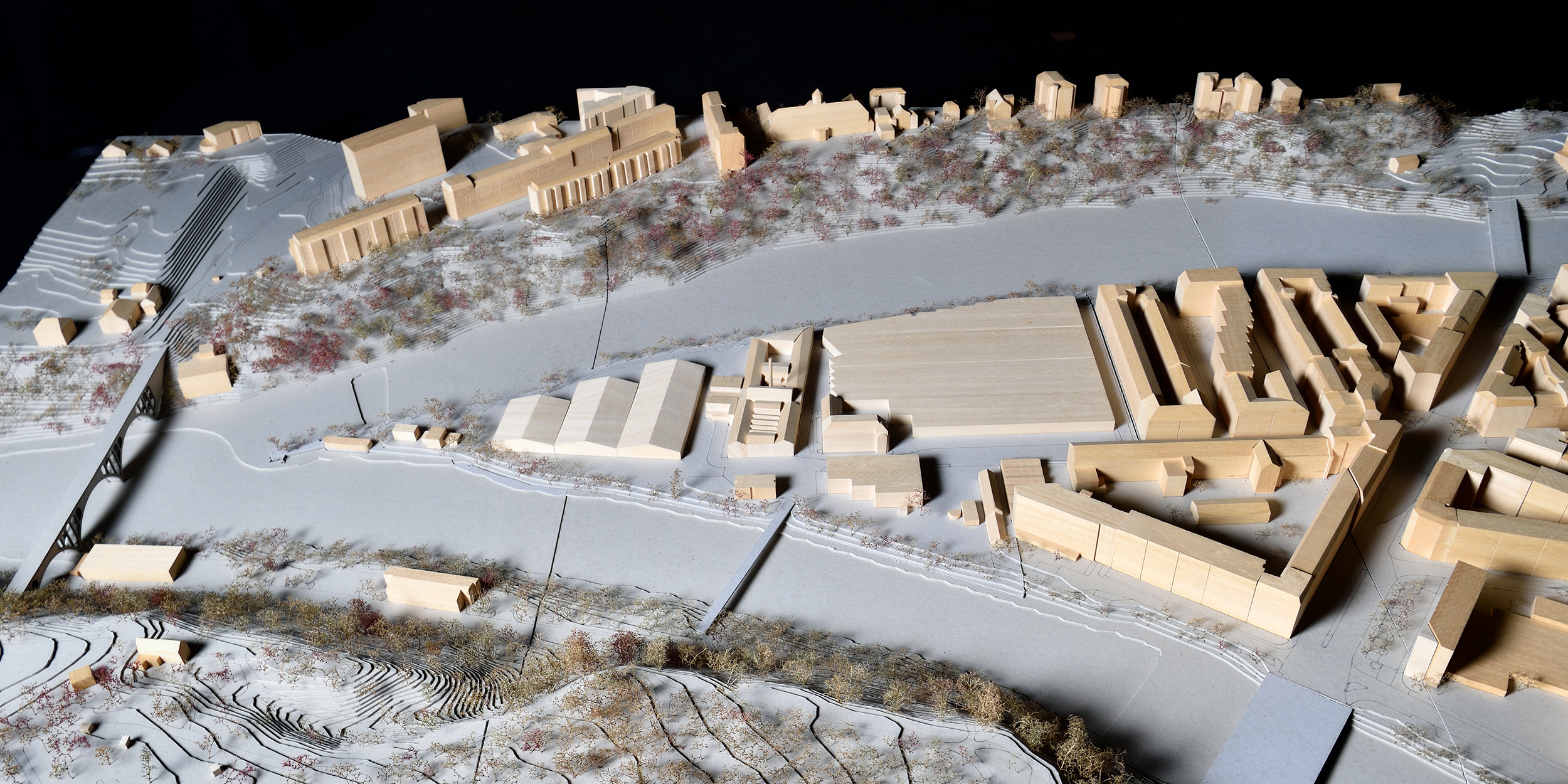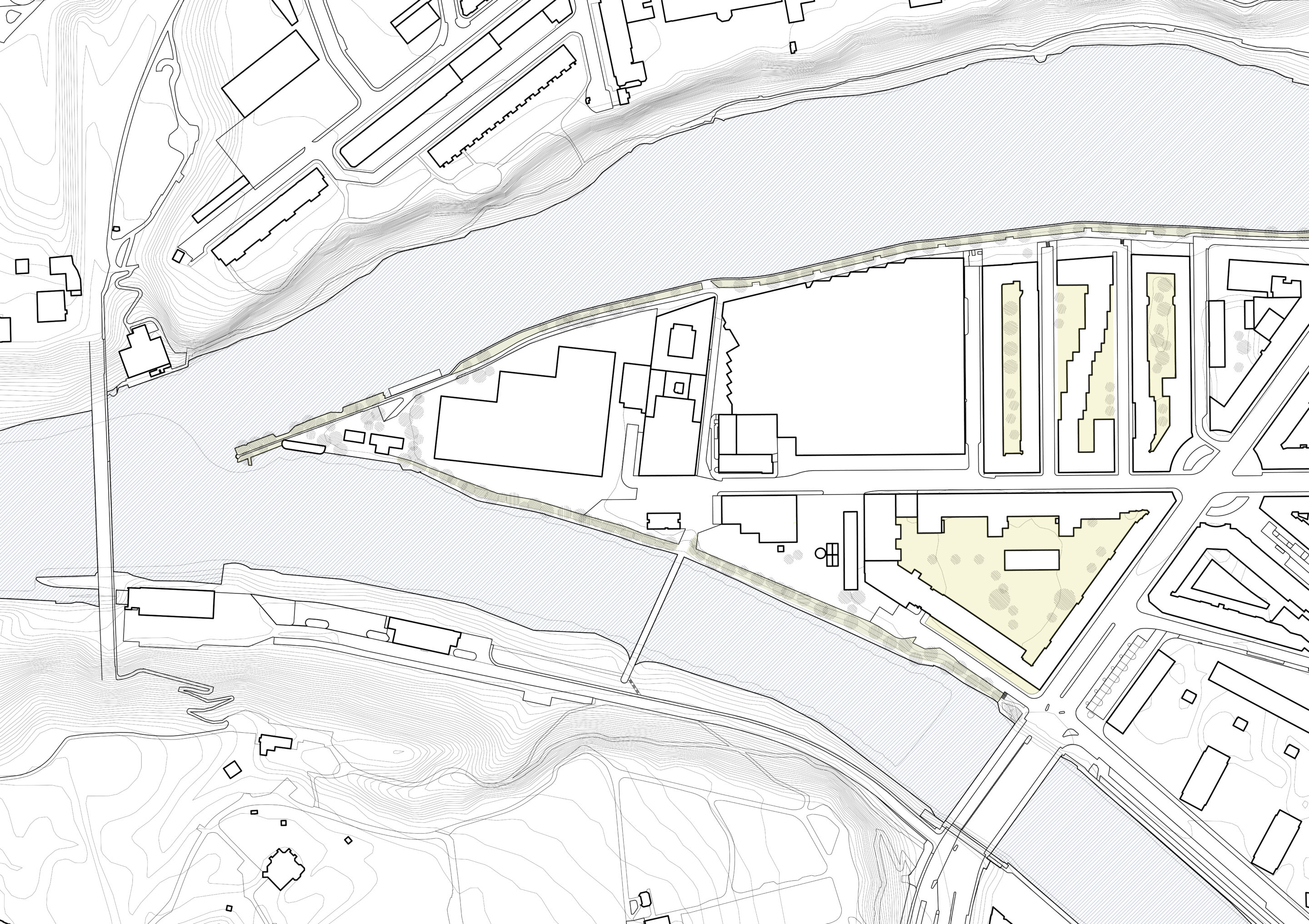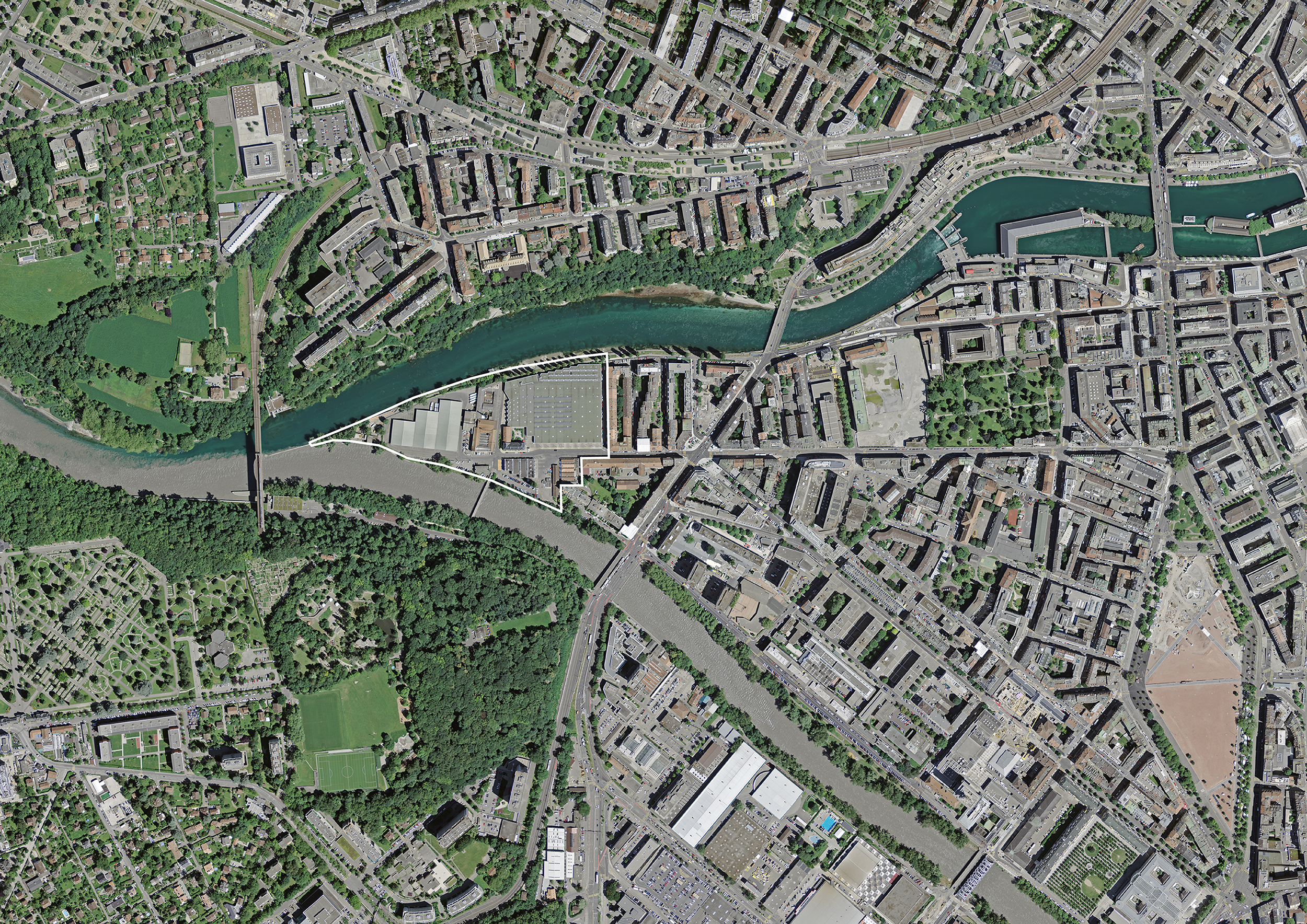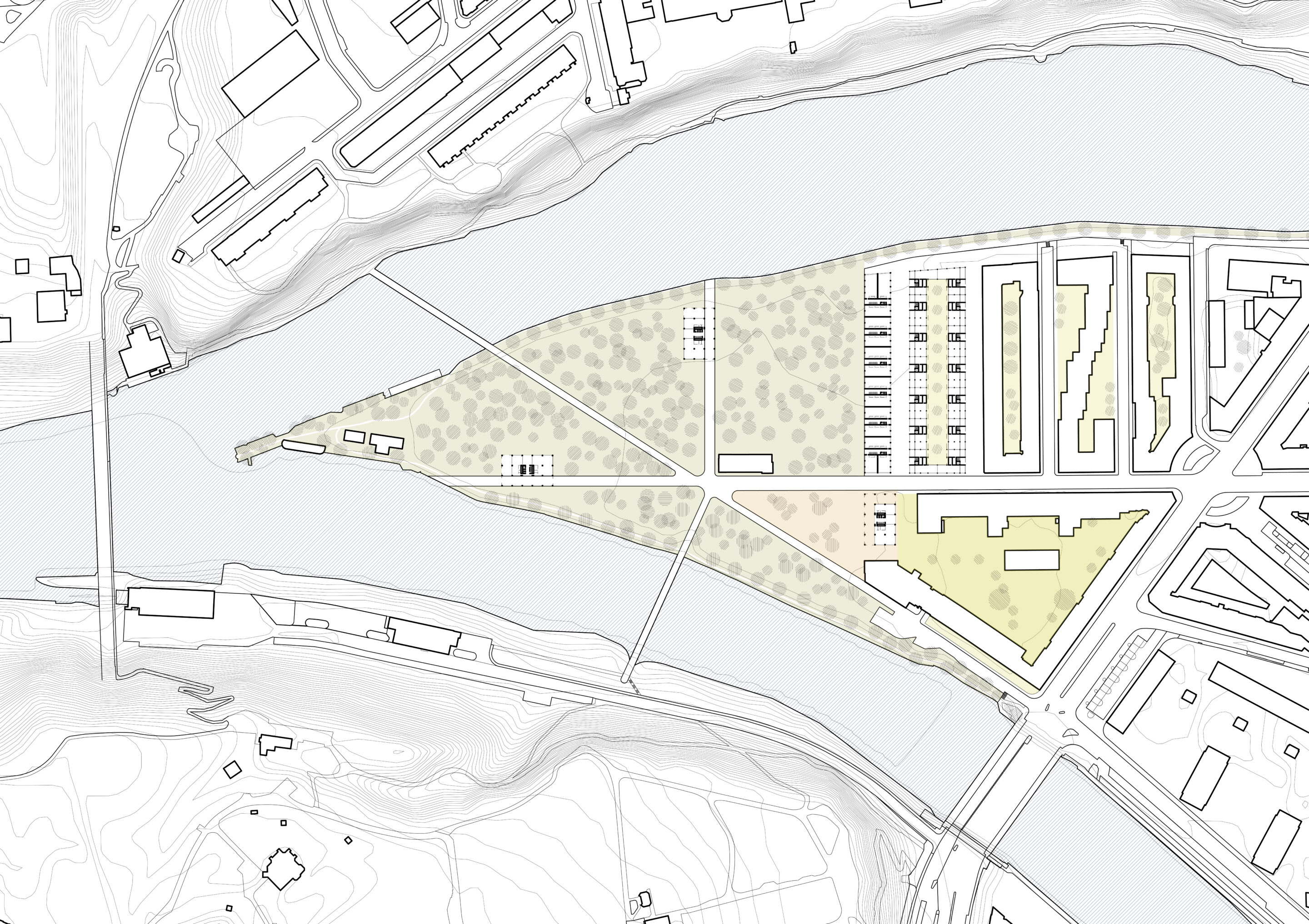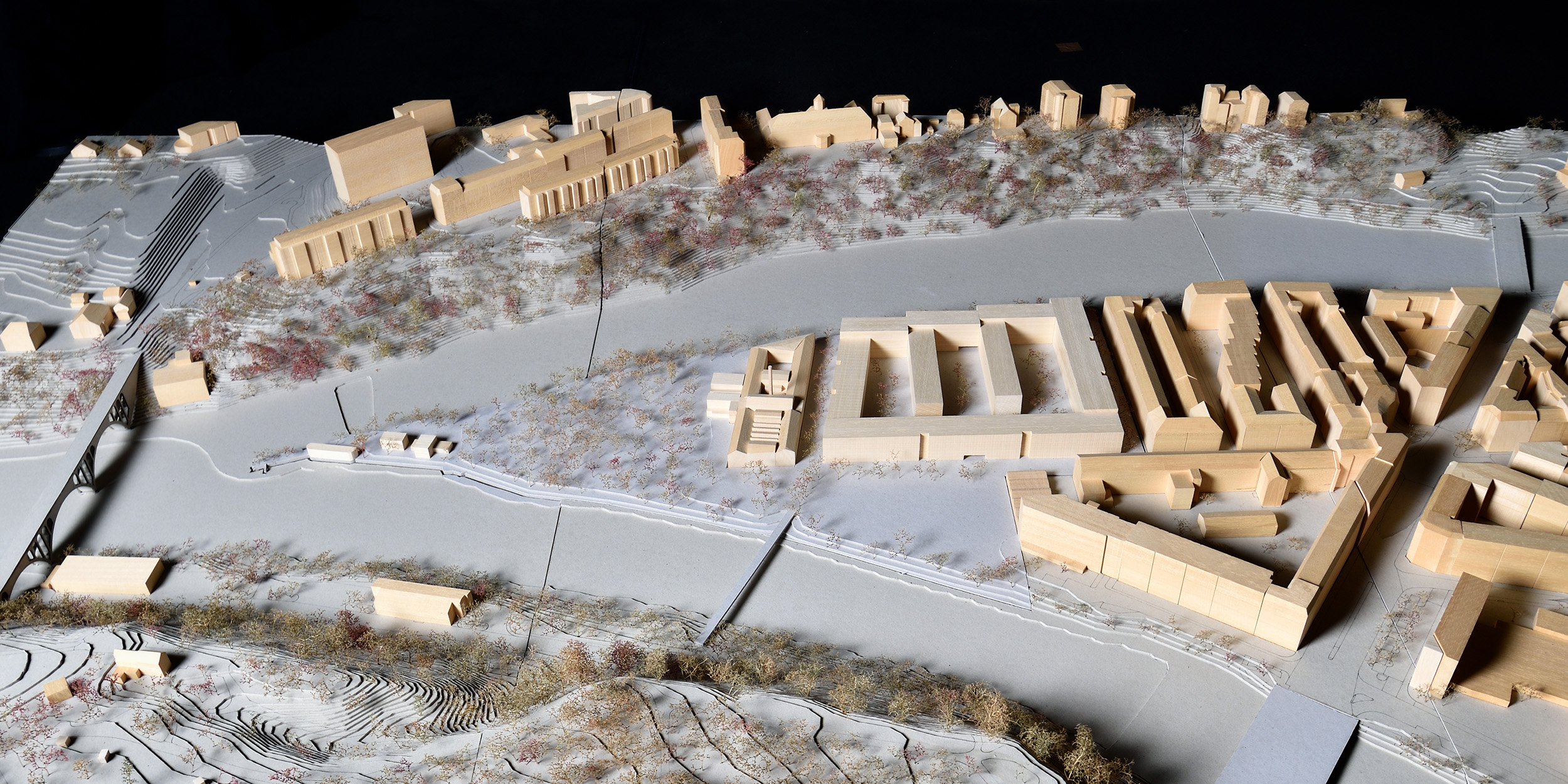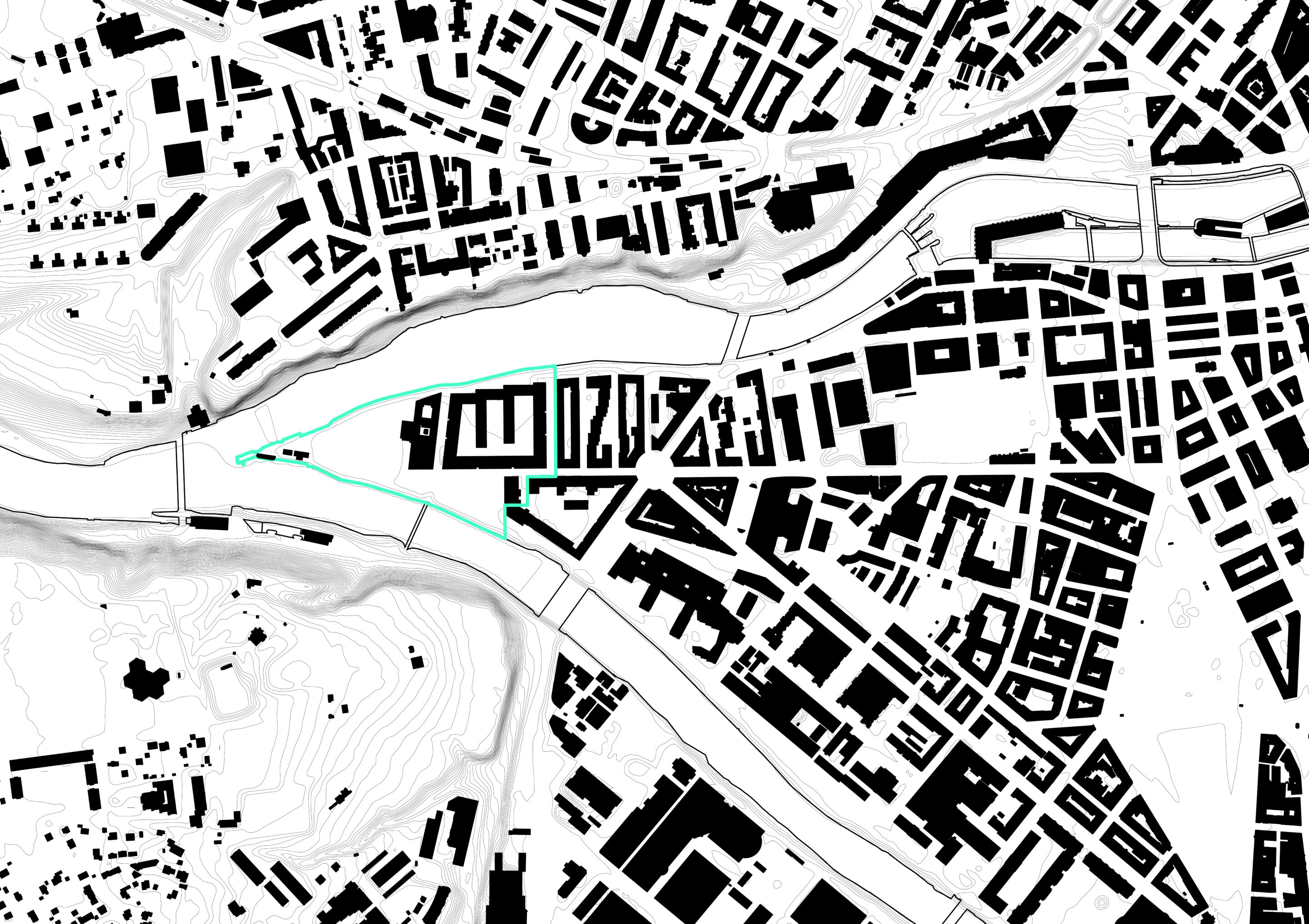In the heart of the city center of Geneva and characterized by an industrial and tenuous urban fabric, the current situation presents a strong potential for regeneration. The relocation of part of the Transports Publics Genevois (2020) and the park project at the tip of the Jonction currently under development are part of this new dynamics. At the confluence of the Rhône and the Arve, the site benefits from a remarkable landscape richness, framed by the cliffs of St-Jean on the north side and by the Bois de la Bâtie on the south side. Close to a major public transportation hub, the site is bounded by two residential blocks to the east and a railway viaduct to the west, while two roadways serve the area. The left bank of the Rhône has a promenade and a wooden platform for swimming and relaxation. A place of meeting and animation in summer, several aquatic activities take place there, and a refreshment bar is available to the public.
GE0
Academic year 2019-2020
GE1
The project proposes to continue and complete the built fabric of the city center of Geneva by reinterpreting it. Two courtyard blocks, one closed and one open, are established between Avenue de la Jonction and Sentier des Saules, while the existing large block to the south is expanded. An annex building on the east side of the Kugler factory, maintained and rehabilitated, accommodates all the studios. The first floors are dedicated to businesses and shops, while the upper levels are used for housing. Generous landscaped banks enhance the right bank of the Arve and the left bank of the Rhône, and a new footbridge crosses the latter. Through an urban form that brings together the existing city and the new neighborhood, this project-based vision creates a stretched fluvial esplanade between the two rivers. This public space constitutes a filter towards the park of the Pointe de la Jonction while connecting the cultural pole and the housing.
Project based on the work of the following students: Joana Dias Pinto, Anja Ils
The prospective attitude weaves sequenced links with the river’s landscape space. It translates into an urban form and an urban structure that are part of a logic of extension of the existing built fabric of the city, thus offering a distributed public space.
GE2
The project presents a built morphology composed of five built entities in a public park engaging with the Rhône and the Arve. Three towers are each positioned in a particular relationship with the context: the north tower borders the Rhône, the west tower marks the junction between the two rivers, and the south tower ends the existing urban fabric. A long studio building facing the park and a housing block complete the proposal, while the historic TPG building is rehabilitated as a community center. The three main urban pieces offer, with their public spaces on the first and last floors, privileged openings on the larger landscape. The Pointe de la Jonction park extends over the entire perimeter and includes a square and three axes dedicated to sustainable mobility. Landscaped banks enhance the left and right banks of the Arve, and a new footbridge crosses the Rhône. Through a built fabric intersecting different programs and morphologies, this project-based vision renews the relationship to water. The towers and their fluvio-urban forest create a new inhabited landscape.
Project based on the work of the following students: Elisa Nadas, Audrey Würges
The prospective attitude orients and opens up the built fabric of the existing city towards the river’s landscape space. It results in an urban form that alternates between concentrated built spaces and unbuilt public spaces, thus offering a sequenced public space.
GE3
The project presents a single building located in the northern part of the site. Held between the Kugler factory to the west – which contains the studios – and the existing residential block to the east, it is bordered by the Avenue de la Jonction and the Sentier des Saules. In the southern part of the perimeter, a wide area of collective vegetable gardens contributes to the landscape enhancement of the Arve river bank. The large, permeable block houses three planted courtyards dedicated to the residents. Apart from the city side axis and the two central segments, the first floor is dedicated to business and commercial activities, while the upper levels are used for housing. A circuit is articulated throughout the block, linking the courtyards to the collective space of the roof via exterior walkways and interior corridors, also allowing access to the apartments. Through a built fabric including the different programs in a unitary urban gesture, together with an urban riverbank, this project-based vision renews the relationship with the Rhône.
Project based on the work of the following students: Myriam Daiz, Ferdinand Michon
The prospective attitude deploys a river frontage that is permeable to the built fabric of the existing city. It translates into a large-scale urban form that enters in dialogue with the larger river’s landscape, thus offering an amplified public space.

